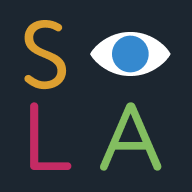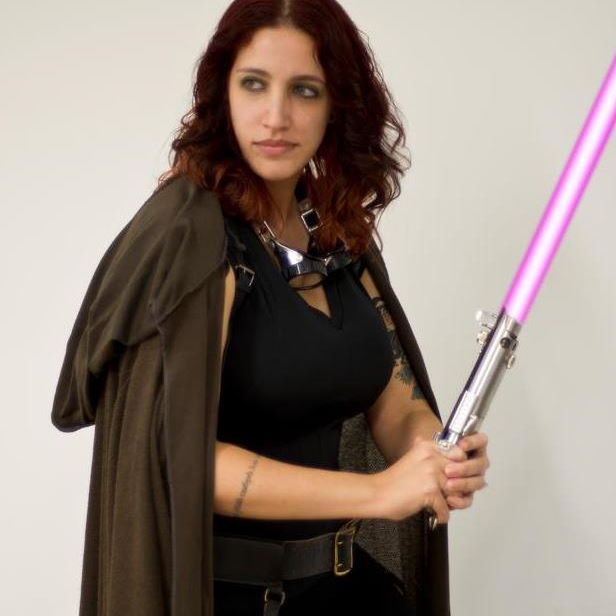- You are involved in a number of creative projects both at and away from work, including serving on this year’s Illustration West jury. What motivates you to be so deeply involved? Do these pay off financially or in other ways?
I feel very strongly about good communities. I really don’t like the art communities where the norm is to hide your notes, not help each other, make it look like everything you did was effortless. I think it’s much more productive to share with each other and nurture young talent. Competition can be good, but it should be honest competition where you are awed and inspired by your peers, not secretive and jealous. When I see artists sharing their time and helping each other, I am immediately inspired to do the same. As a Creative Director and Art Director, I have a lot of knowledge that artists don’t know but can absolutely use to further their careers. It feels like a duty to make sure I share as much as I can with them.
It’s true I do run myself a bit into the ground both doing my “day job” and on side projects, but again, it’s hard to be angry about that when you love your job, love the art community you are part of, and just feel completely inspired by your peers. None of my side projects are motivated by money — most of my side projects don’t earn money at all — but I’m paid in so many other ways. The people that are also there in the trenches with me trying to make the art world a cooler place (many of them my co-judges this year) are some of my most important mentors, peers, and friends. When they have an awesome idea for a project, I can’t help but say yes, I don’t want to be left out of something awesome!
- In recent years there has been a big push for the representation and equality of women in the illustration world. What would your ideal world look like for women illustrators in the next few years?
I talk to women artists all the time, and I’m heartbroken to hear how much harder it is for many of them to feel as confident in their work as many of the male artists I know. I have been lucky in my life to have been supported enough, and stubborn enough, that confidence is a little easier for me to feel (or sometimes fake). If there’s one goal I have in relation to women artists it’s to do as much as I can to encourage and teach that confidence to keep making art in the face of criticism, to keep promoting yourself, and to push your way into areas that have historically been male-dominated. I spend a lot of my professional life in the world of geek media, and with Gamergate and every other sexism controversy boiling up constantly, it can sometimes feel like we’re moving backward instead of forward, but I can see the signs of real change present in the current generation of artists and it is so exciting. The hard numbers are showing women claiming a share of the art world that is creeping steadily towards equality. This year half the Spectrum Fantastic Art Medals went to women. That’s an amazing achievement.
My ideal world would be where we no longer have to talk about women’s equality in the art world, but for now I’ll settle for steady progress.
- You see a lot of submissions fly through your inbox. What makes you click on one and not another?
Well I see just about everything – but I don’t respond to everything. I do really specific work with Orbit and most of the agencies and big newsletters don’t really have what I’m looking for, which is why I go to a lot of conventions and meet a lot of artists. What really catches me is a short email that really shows the person is writing to me, and has looked at Orbit and what we do. If you show you’re familiar with what problems we need to solve and you’re thinking about and attaching pieces (lo-res jpegs only, please) to the email that really do fit in with what I do, then I absolutely pay attention.
- You are the Creative Director at Orbit Books, but you also wear the Art Director hat quite well and quite often. Could you tell us what some of the differences and overlap are between the roles of Art Director and Creative Director?
Creative Director is really a management position – I have to keep the art department running and keep an eye on budgets and resources and managing my team’s priorities and matching strengths to projects in-house. It also makes me the steward of the visual brand of Orbit. Not only do I have to keep producing good covers, I also have to keep in mind what our house identity and publishing goals are and make sure we’re always moving in that direction. Orbit is more forward-looking, we try to push the trends, rather than follow them. We also try to bridge the gap between the hardcore genre audience and the commercial and literary mainstream audiences. It’s a balancing act and I have to keep my eye on that.
As an Art Director, my priorities are to focus on the individual cover at hand and make sure I’m giving that manuscript the best package I can. I am a translator, mediator, and diplomat, because often the publisher, editor, author, and artists all have different priorities and I have to get them all to agree and work in tandem. It’s not easy and often you feel like the monkey in the middle.
- If your personality was a beverage/cocktail, what would it be?
Ha! Clearly you know me well. I’d be a Last Word cocktail. First of all, it’s this great green color, which is currently the color of my hair. It’s equal parts Gin, Green Chartreuse, Maraschino, and Lime Juice…And Art Directors really like to have the last word.


